Friselle bread, a type of twice-baked bread, originates from Southern Italy and is known for its long shelf-life, making it a convenient choice for those traveling long distances. Traditionally enjoyed as a staple food during hard economic times, Friselle has now evolved into a popular snack in Italy. With its versatility, you can enjoy Friselle topped with Mediterranean mixtures like olives, tomatoes, and basil.
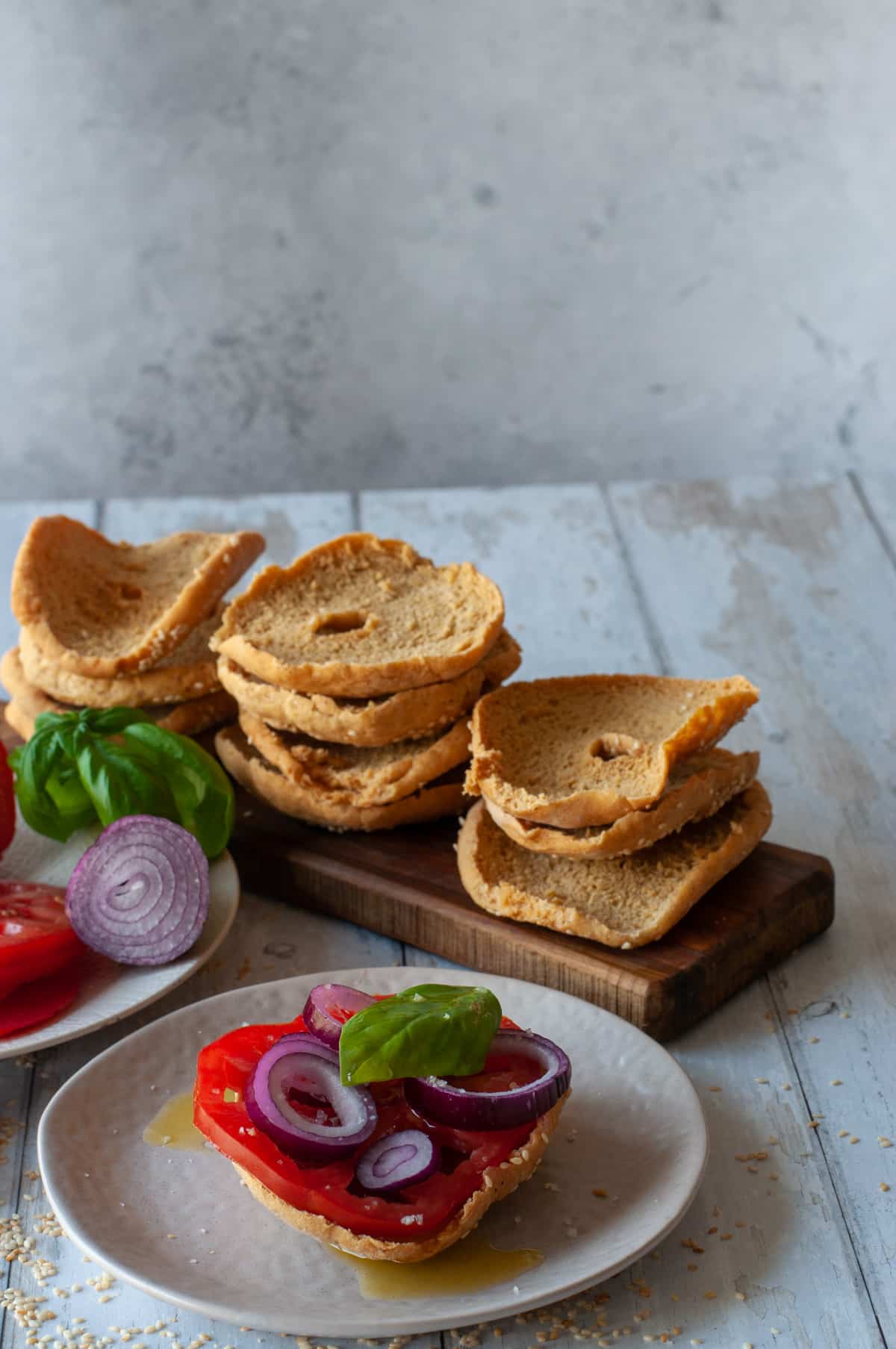
Jump to:
Friselle originated in the southern region of Puglia.
This double-baked bread is made from a combination of plain flour, semolina flour, sea salt, yeast, and water.
Its long shelf life and simple ingredients made it a staple food during hard economic times.
The recipe has remained popular throughout the years and is now enjoyed all over Italy.
The basic ingredients allow for various toppings and pairings, bringing forth a versatile range of delicious dishes.
The classic topping is with juicy fresh tomatoes, basil, and plenty of extra virgin olive oil
This humble bread demonstrates the unique ability of Italian cuisine to transform simple ingredients into dishes with rich history and satisfying flavors.
For more Italian bread recipes, you can check: milk panini, cheese bread crescia, flat bread piadina, chickpeas pancake farinata, Semolina bread
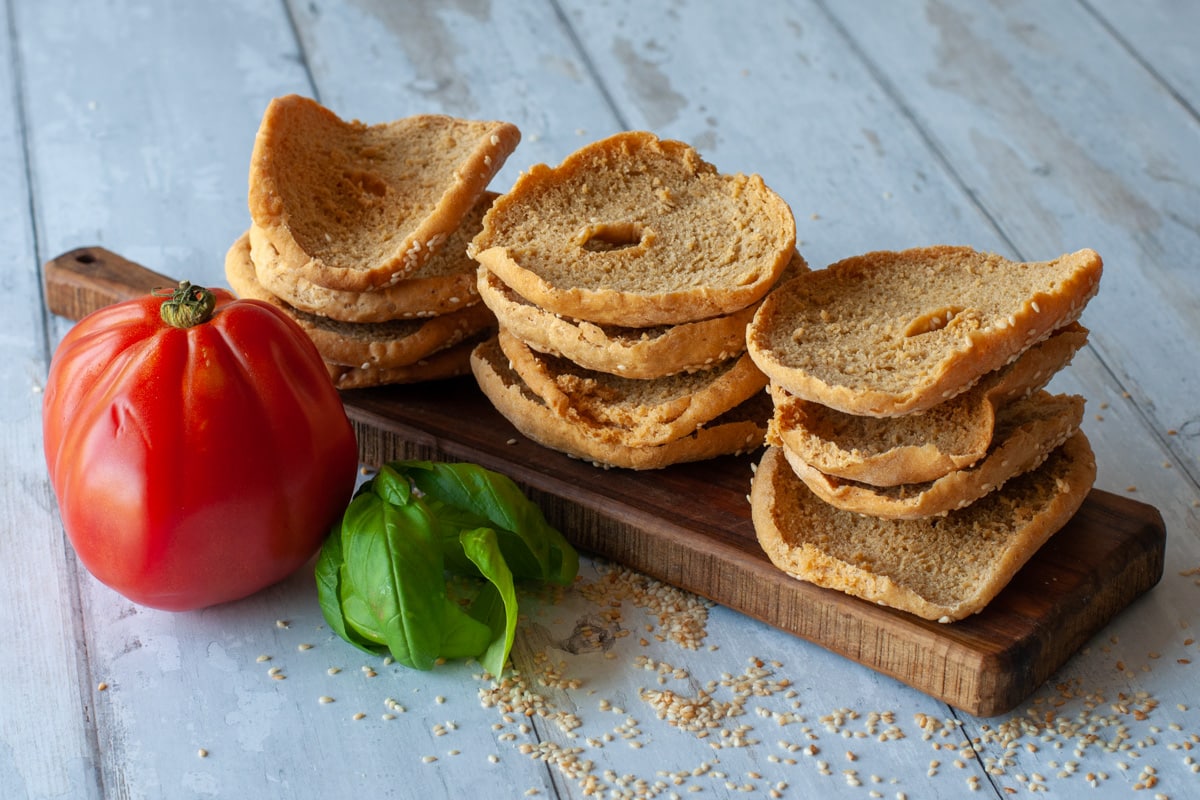
Ingredients and Variations
Traditional Friselle
Traditionally, Friselle is made with simple ingredients:
- Durum wheat flour: semolina flour
- Water
- Yeast
- Pinch of salt
Whole Wheat Friselle
For a healthier option, you can choose Durum Whole Wheat Friselle by using whole-grain semolina flour made from wheat berry.
This variant is rich in fiber and nutrients, making it a more wholesome choice.
The preparation process remains the same, but you'll simply replace the white durum wheat flour with a mix of whole wheat flour and regular flour (type 0 in Italy).
Here are the key ingredients for Whole Wheat Friselle:
- Durum Whole Wheat Semolina (whole-grain version of semolina flour)
- All-purpose flour (optional)
- Water
- Yeast
- Pinch of salt
- Sesame seeds (optional for decoration)
See the recipe card for quantities
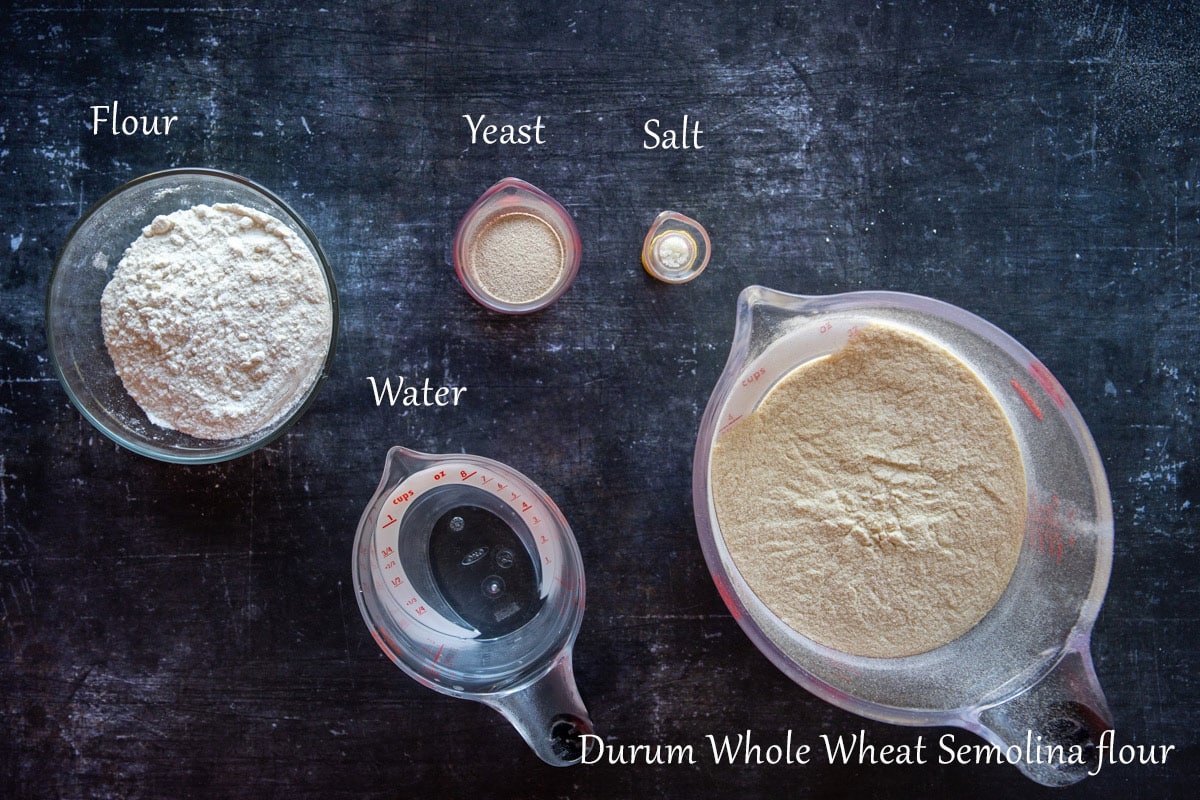
Topping
Friselle offers a versatile base for numerous delicious combinations of Mediterranean flavors.
Before you place your favorite topping, wet them with a little water.
The sailors would wet the Friselle with seawater when the sea was not as polluted.
You cannot really do this anymore.
You can then add your topping, making sure you add plenty of extra virgin olive oil and juices from the tomatoes.
Here are some suggested juicy toppings you can mix and match:
- Fresh tomatoes, extra virgin olive oil, fresh basil, red onion (in Italy, we use the sweet Tropea red onion)
- Fresh cheese like mozzarella, ricotta, feta or pecorino
- Seasonal vegetables like grilled eggplant, zucchini, or artichokes. Canned beans are also a popular topping when at sea
- Seafood like canned tuna fillet, anchovies, mussels, or shrimp
- Cured meat like prosciutto, speck, bresaola
- Spices and herbs to season like black pepper, oregano, or lemon juice
- For a sweet twist, you can spread some mascarpone cheese and top it with thinly sliced fresh fruits like peaches or apples
Remember to sprinkle your Friselle with some cold water before adding the toppings.
This ensures a balanced texture and makes it easier to add your desired toppings.
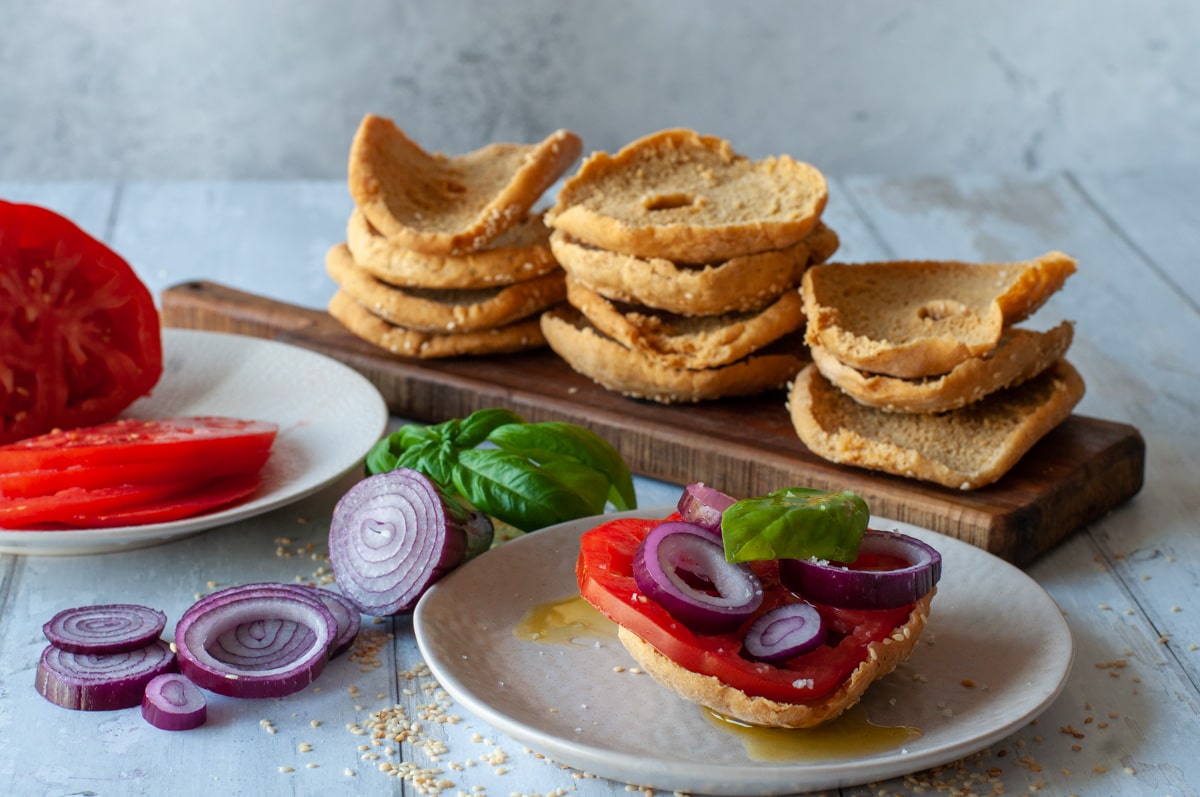
Instructions
Preparing the Dough
To make your Friselle from scratch, let’s prepare the dough.
Note: If you are making the whole wheat Friselle, mix the regular flour and the whole wheat flour together
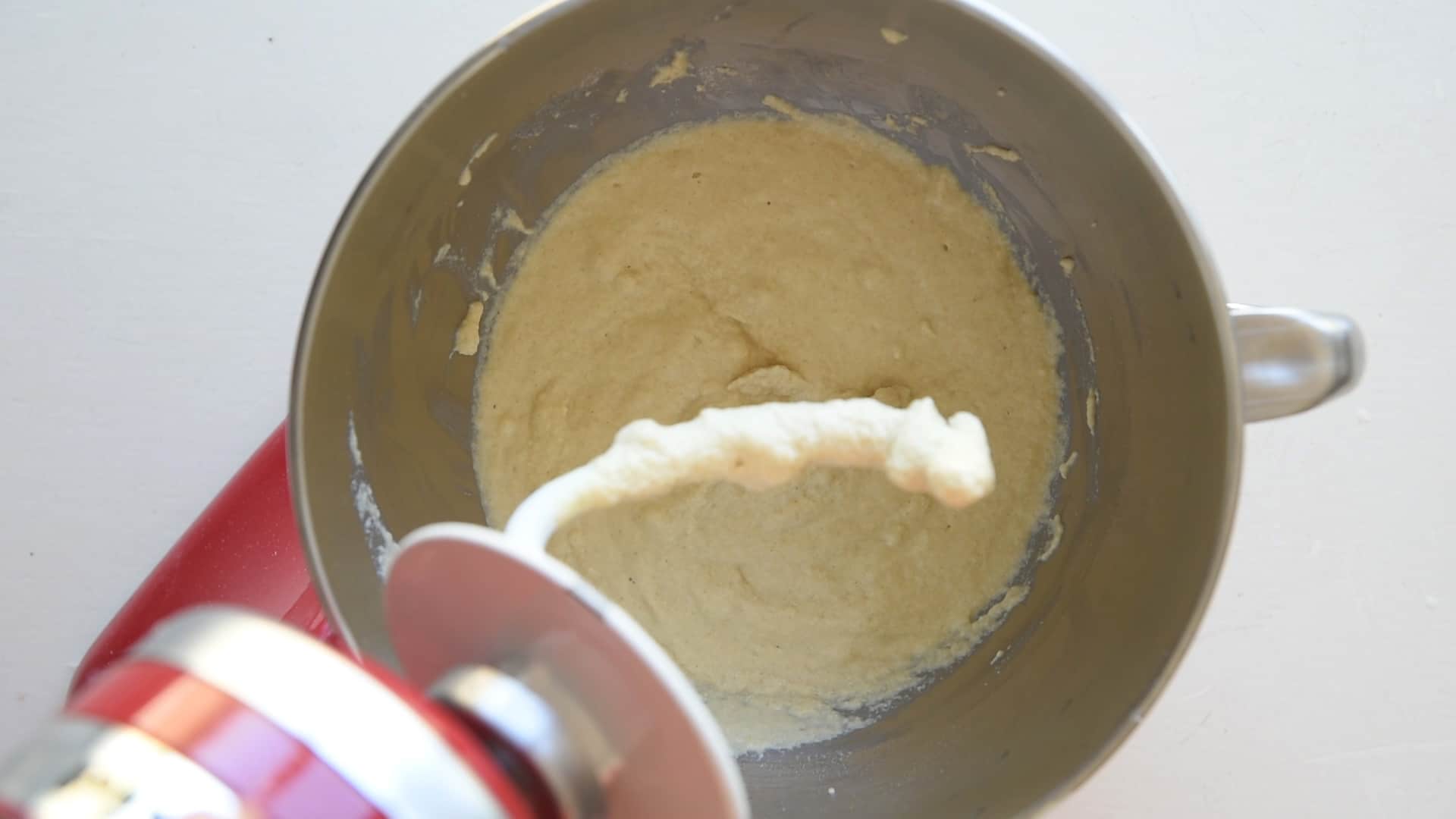
- Mix half of the flour with the water in a stand mixer with a dough hook and let it rest for 15 minutes
This procedure, called autolysis, aims to improve baking results by triggering cell self-disintegration in flour, promoting fermentation, and facilitating gluten formation.
Autolysis increases sugar availability for yeast, leading to earlier and more consistent leavening.
The dough becomes aerated, voluminous, and softer.
Gluten forms prior to kneading, reducing processing time and enabling easier stretching.
The final dough is smoother, more uniform, and drier.
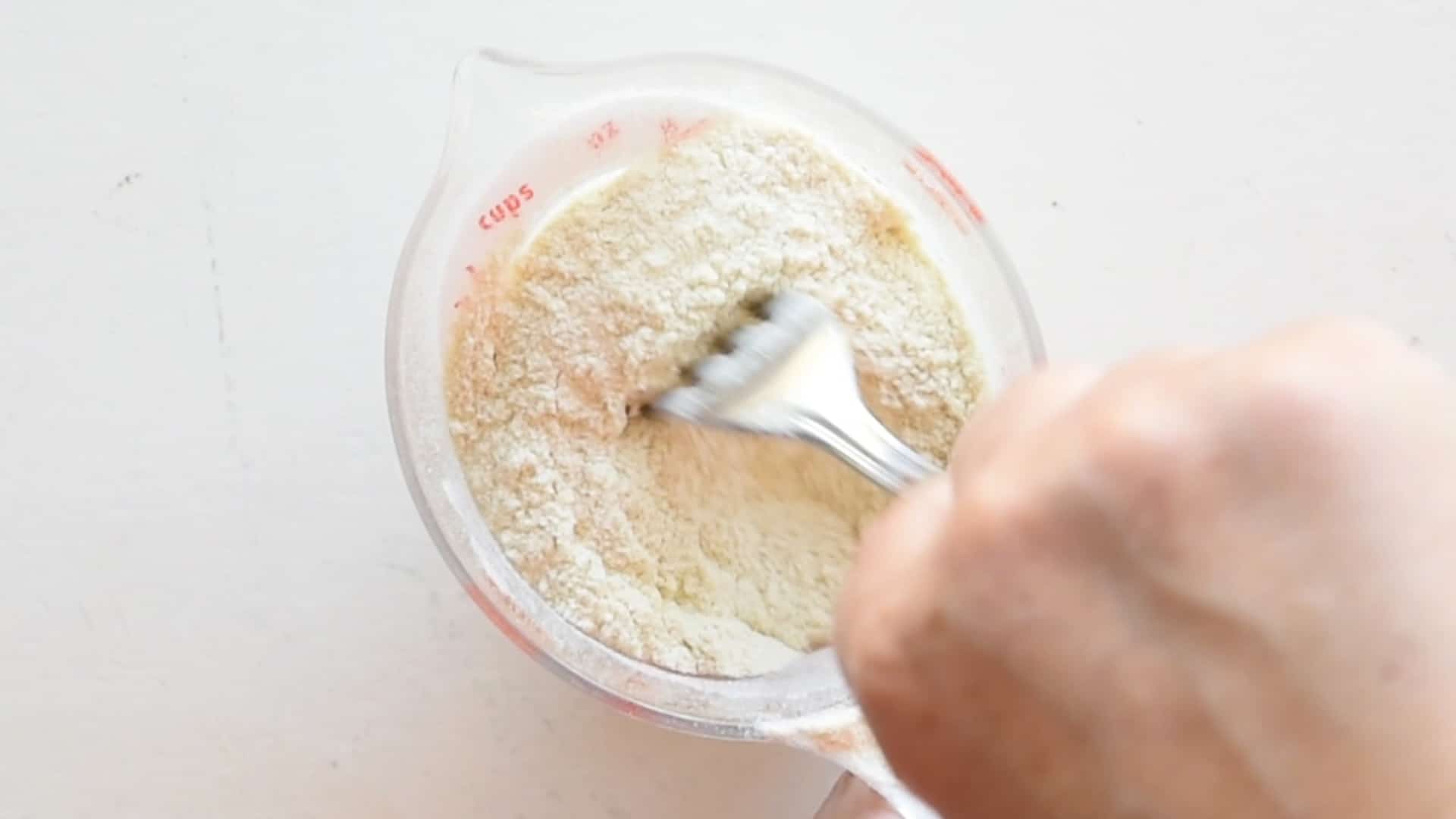
- Mix the yeast with the remaining flour and add to the dough
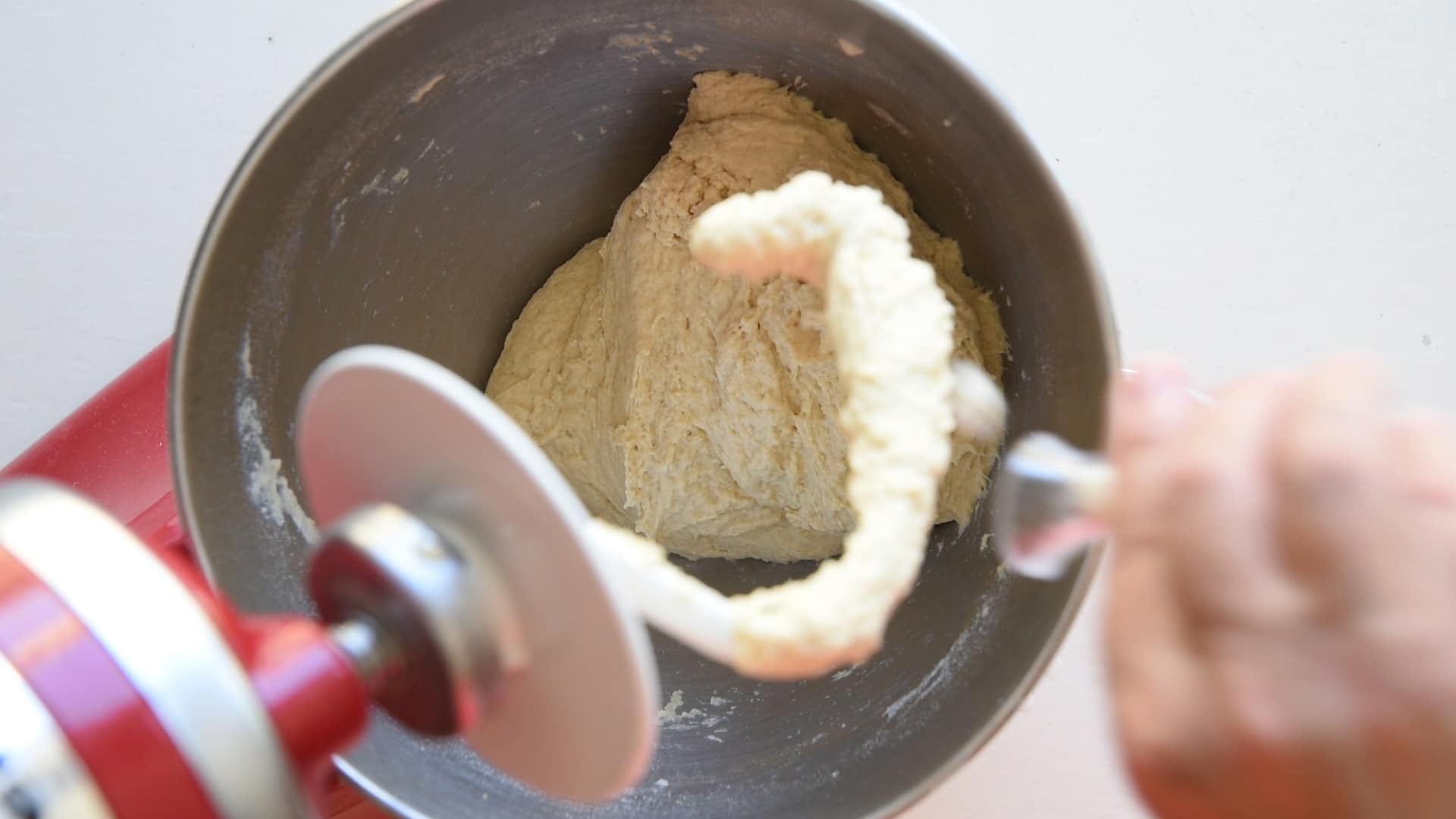
- Proceed to knead the dough until it's well combined and elastic
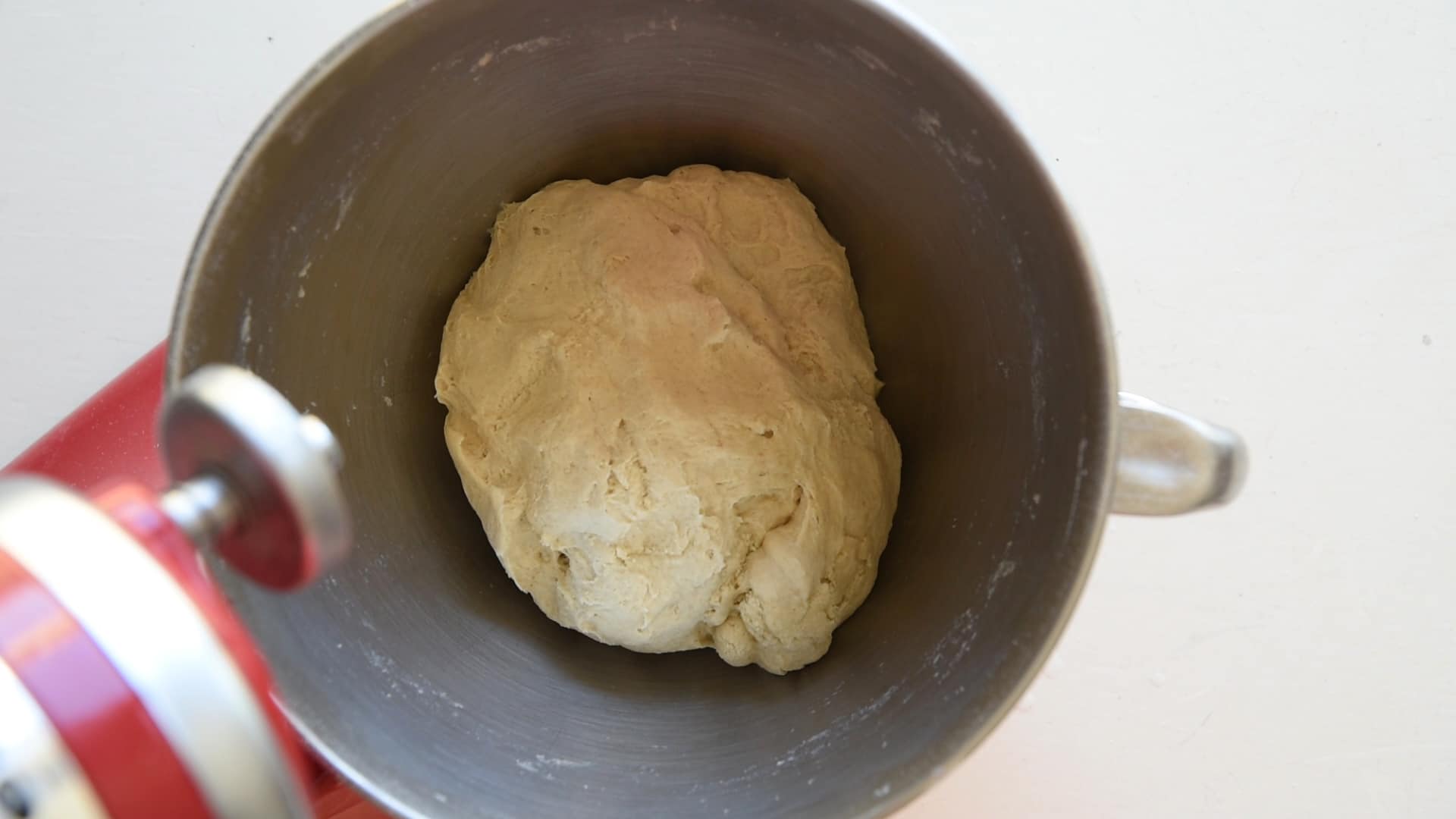
- Once the dough is smooth, add the salt and finish kneading
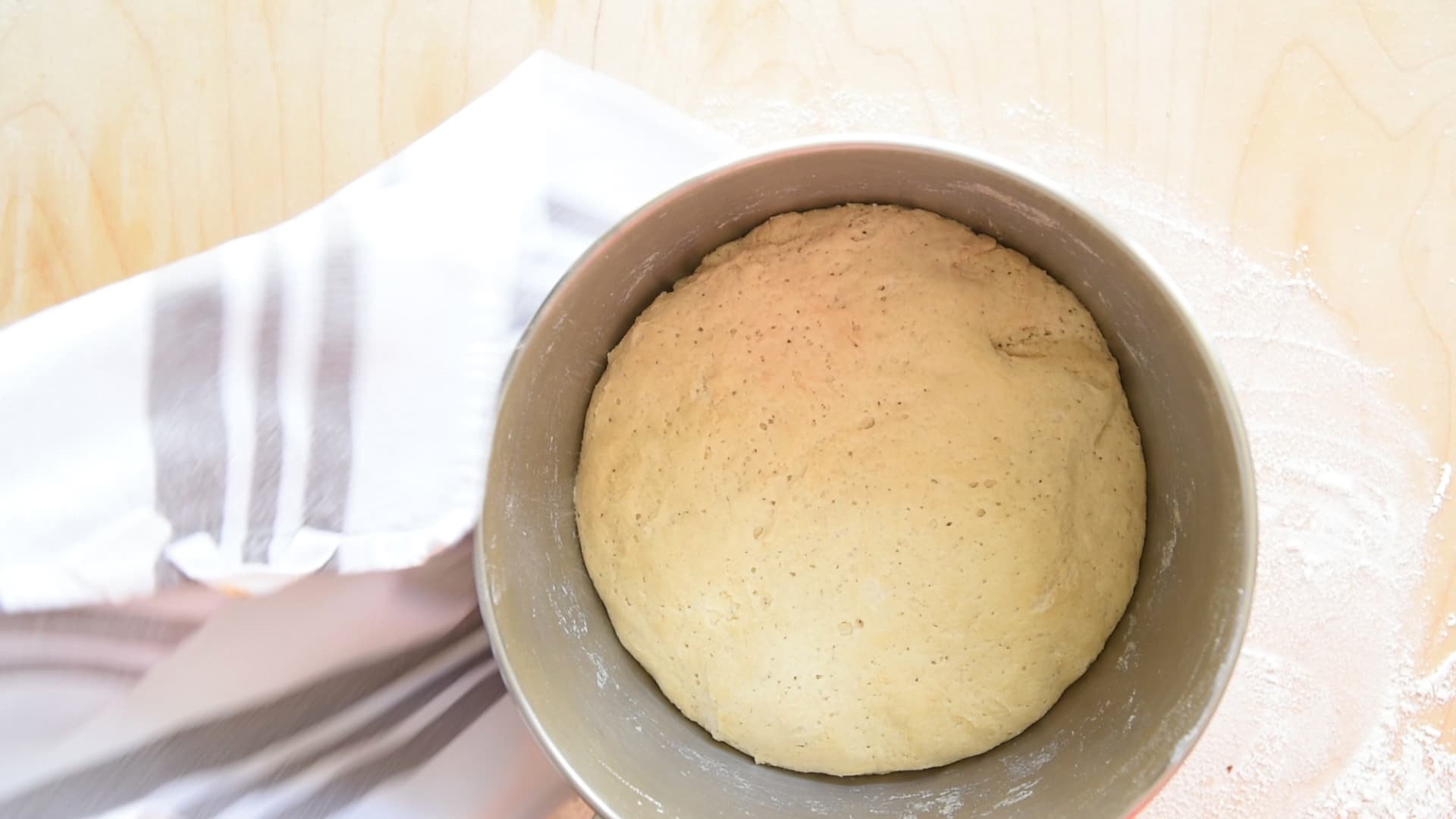
- Cover the bowl and let the dough rise for 2 hours
Shaping them
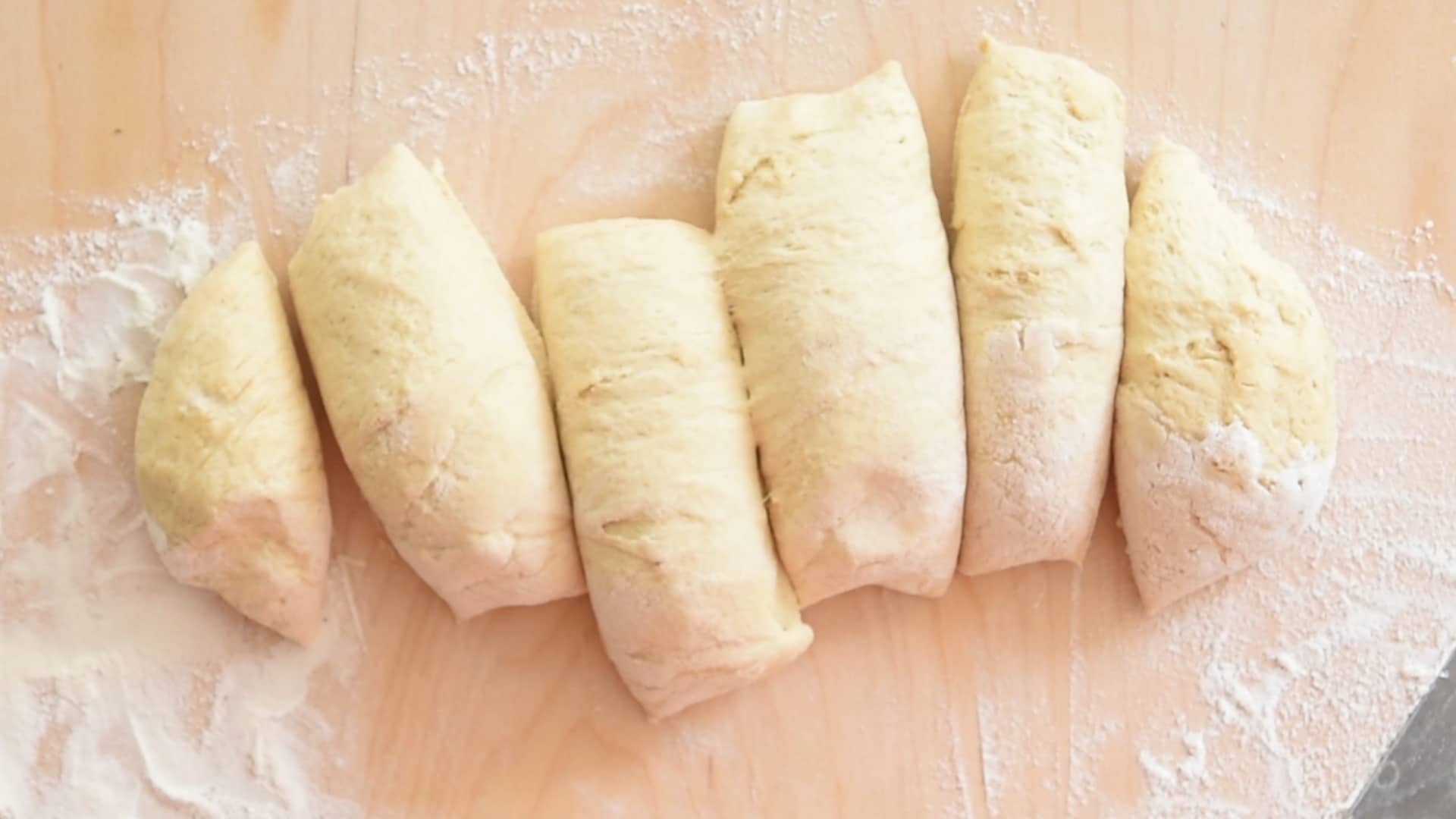
- Cut the dough into 6 equal parts
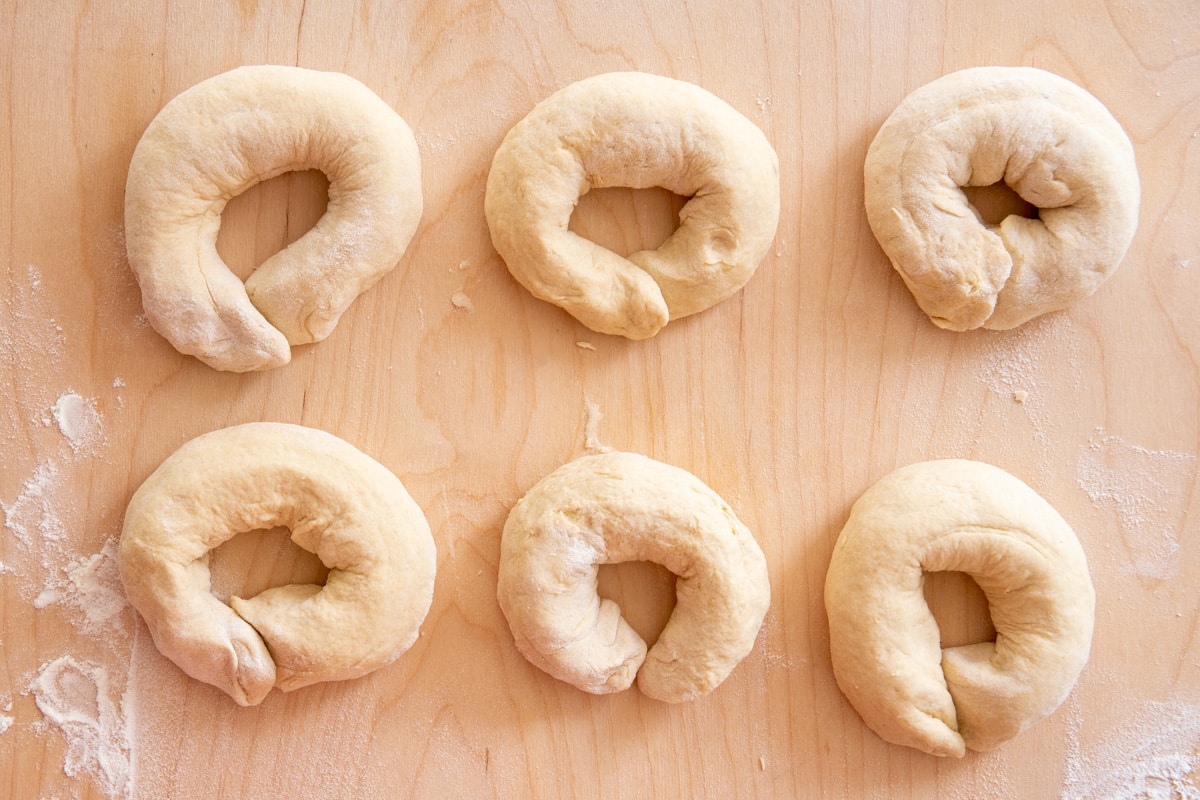
- Elongate the dough and shape it into rings
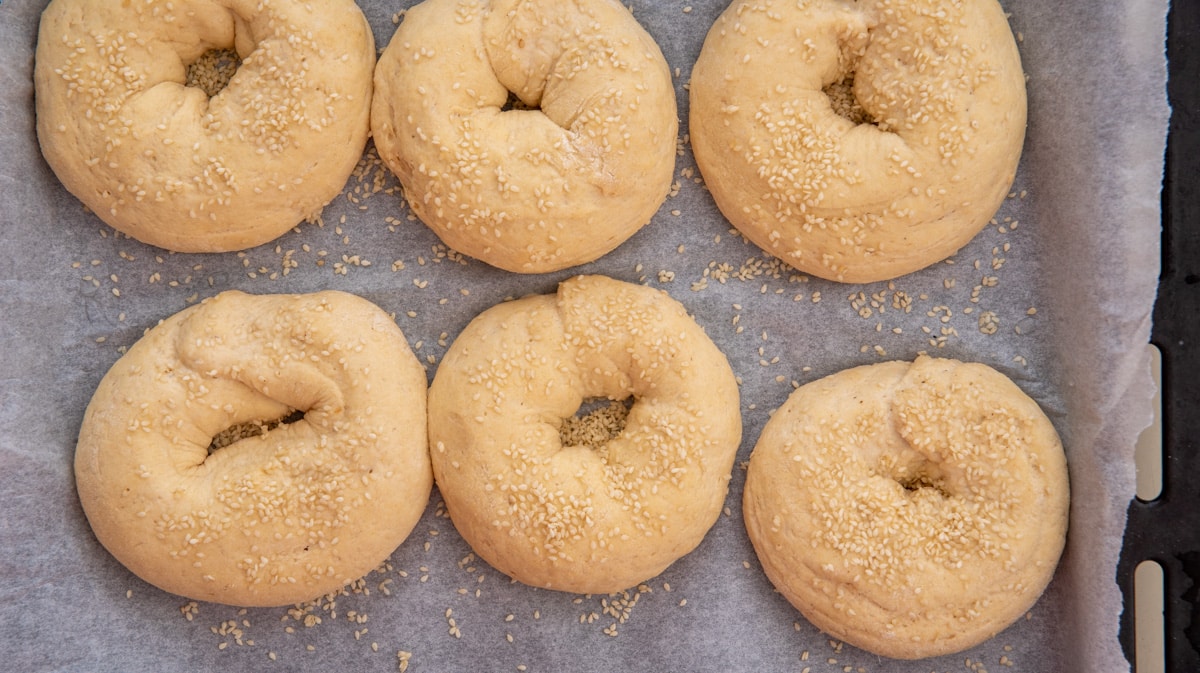
- Place them on a baking sheet lined with parchment paper and let them rise for another hour
Hint: I sprinkled some water and decorated it with sesame seeds. This is optional
First Baking
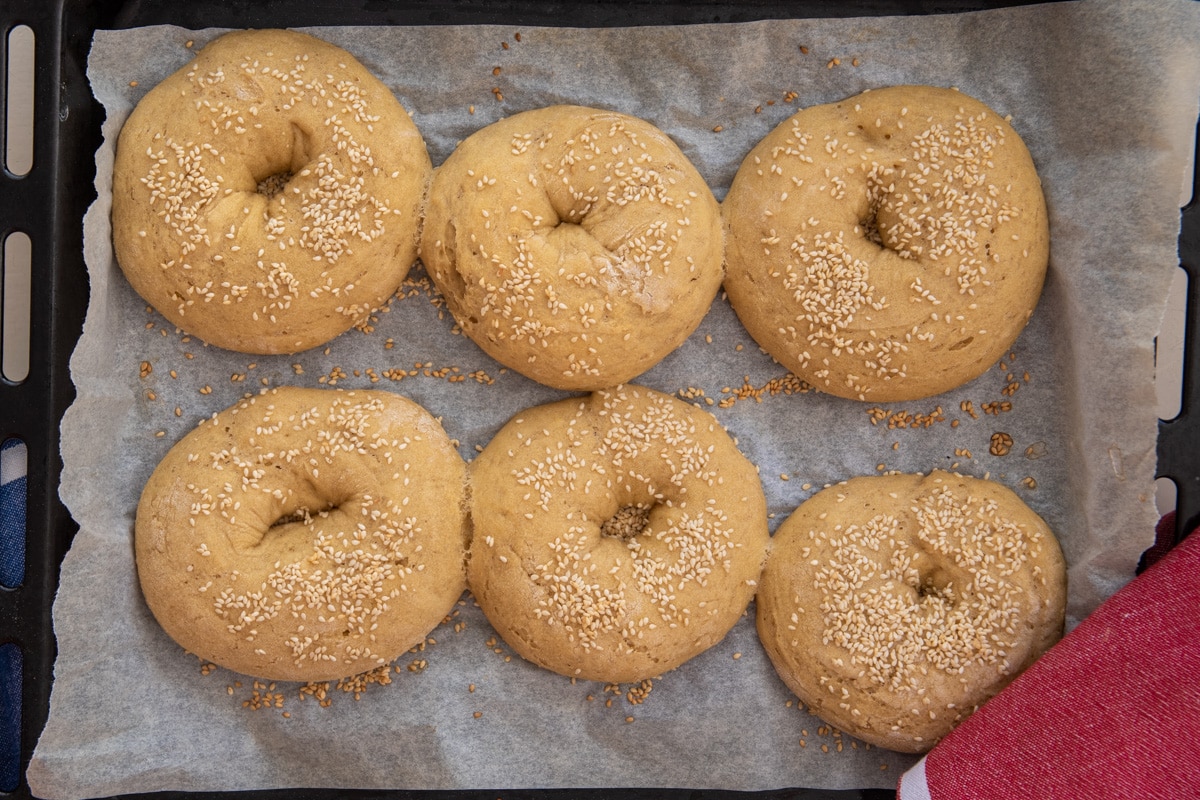
- Preheat the oven to 390 F - 200 C and bake the Friselle for only 15 minutes
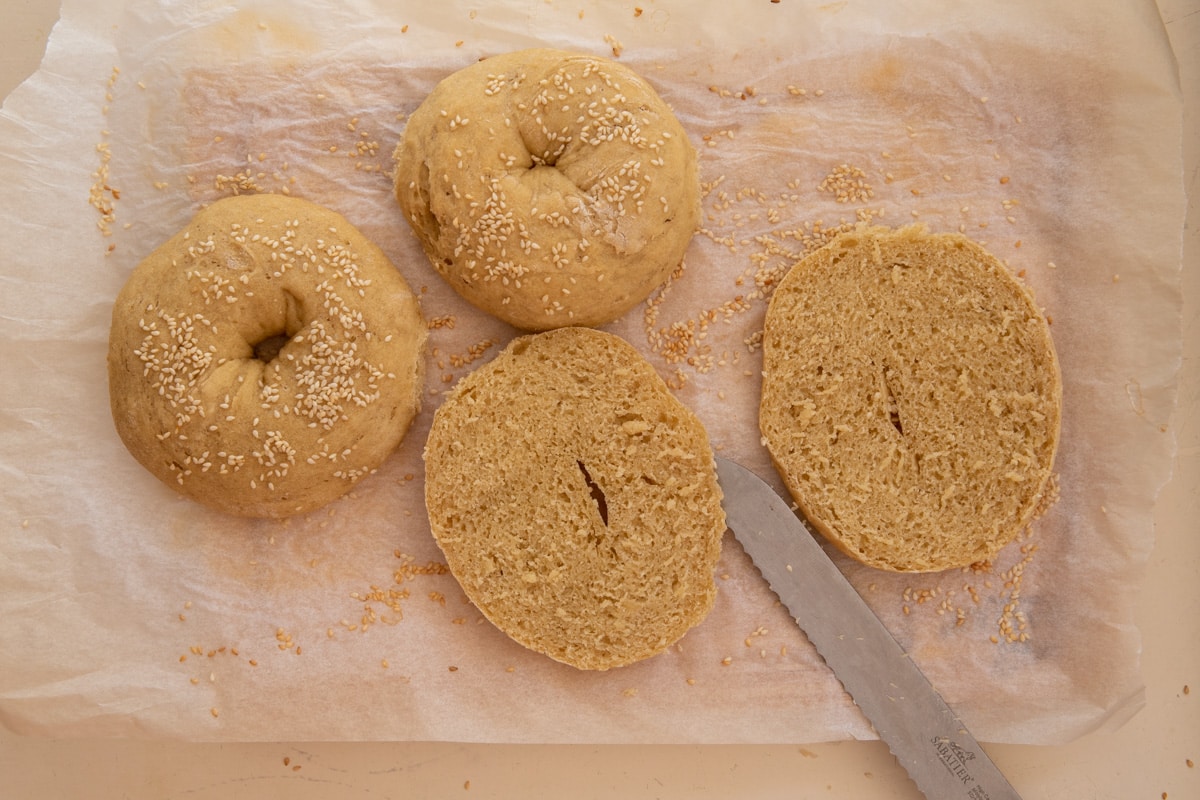
- Once the Friselle become stable and well-risen, remove them from the oven and cut them in half crosswise while they are still warm.
Second-Baking
The key to getting that perfect Friselle texture is twice-baking the bread.
- Lower the temperature of your oven to 320 F - 160 C
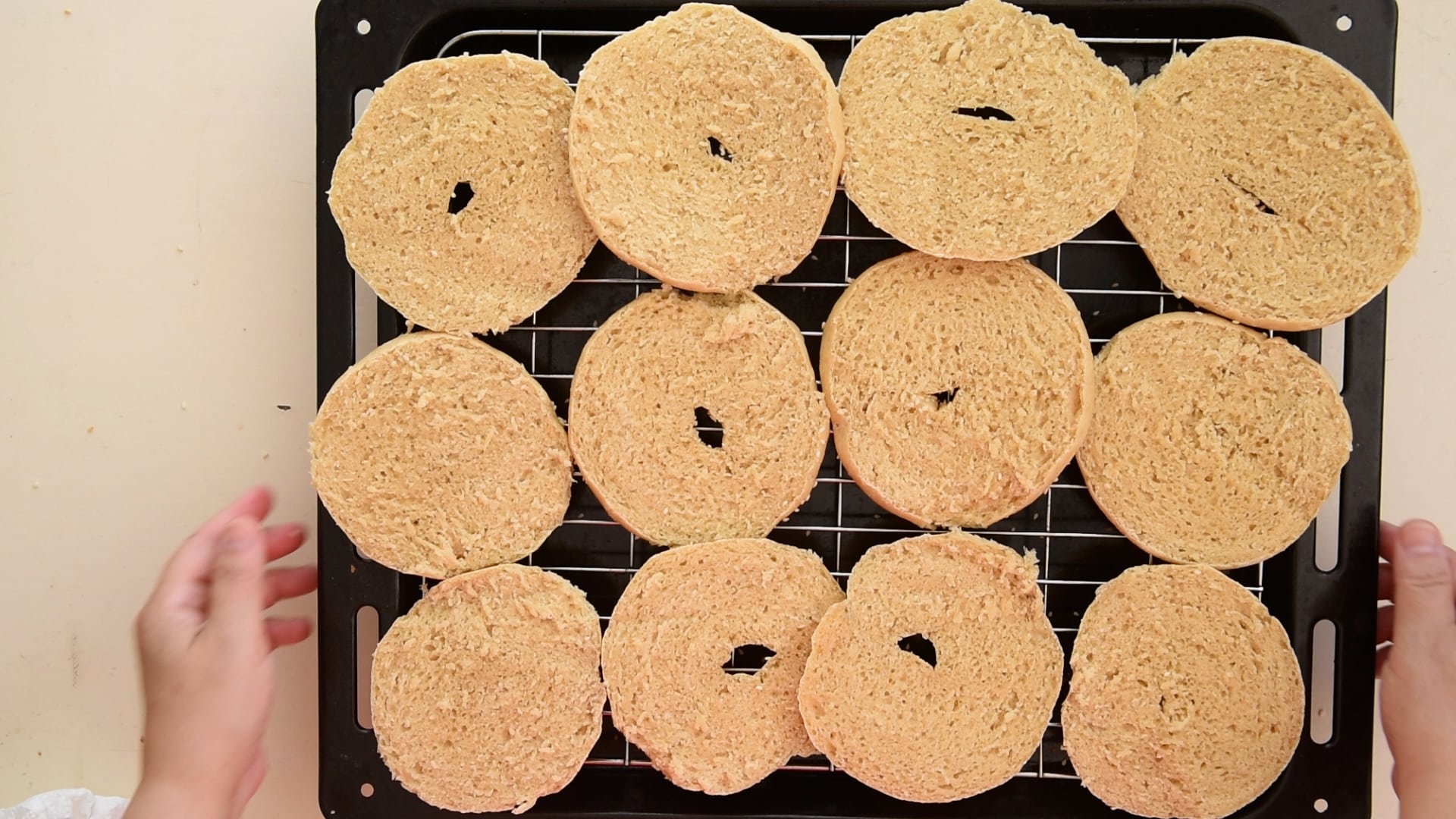
- Place the halves Friselle on an oven rack and continue to bake until they turn golden brown and crisp.
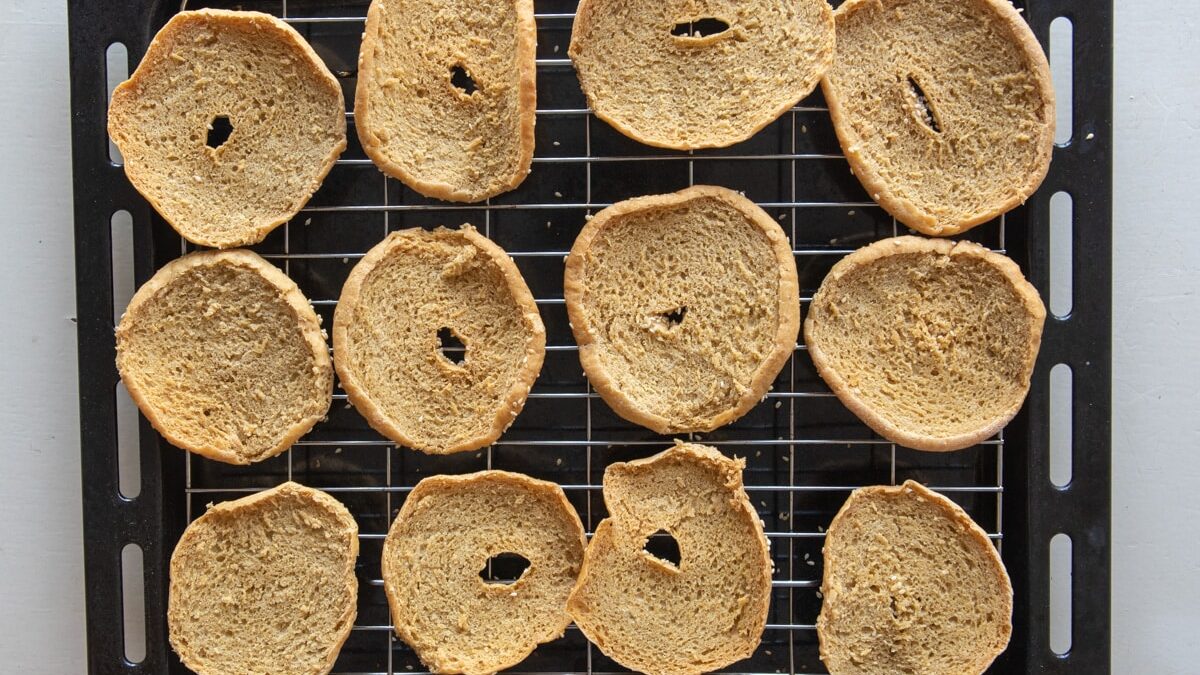
- It will take from 30 minutes to an hour, depending on the flour you are using
This double-baked process grants the Friselle their long shelf-life
Serving and Pairings
You can serve the Friselle as an appetizer, snack, or even part of a meal; they pair well with various ingredients and dishes.
To enjoy Friselle as a simple appetizer, use them as the base for a delicious bruschetta by topping it with juicy, diced tomatoes, onions, and fresh basil.
For a heartier snack, you could spread mozzarella or ricotta cheese on the Friselle and serve it with a side of salami or other cured meats.
When serving your Friselle with an antipasto board, the sturdy texture pairs perfectly with the likes of prosciutto and white crackers.
You can also pair them with a nice cup of coffee in the morning can become a delightful breakfast or mid-morning snack option
You can dip them (pucciare) in your cappuccino or top them with jam, honey, or even a little butter.
Friselle can also be incorporated into your main meals as a unique and tasty companion.
For instance, dipping them in a soup can enhance the eating experience and add an Italian touch.
In the summer, they are broken into pieces and used in salads, adding a satisfying crunch to your dish, in Calabria they are called Caponata salads.
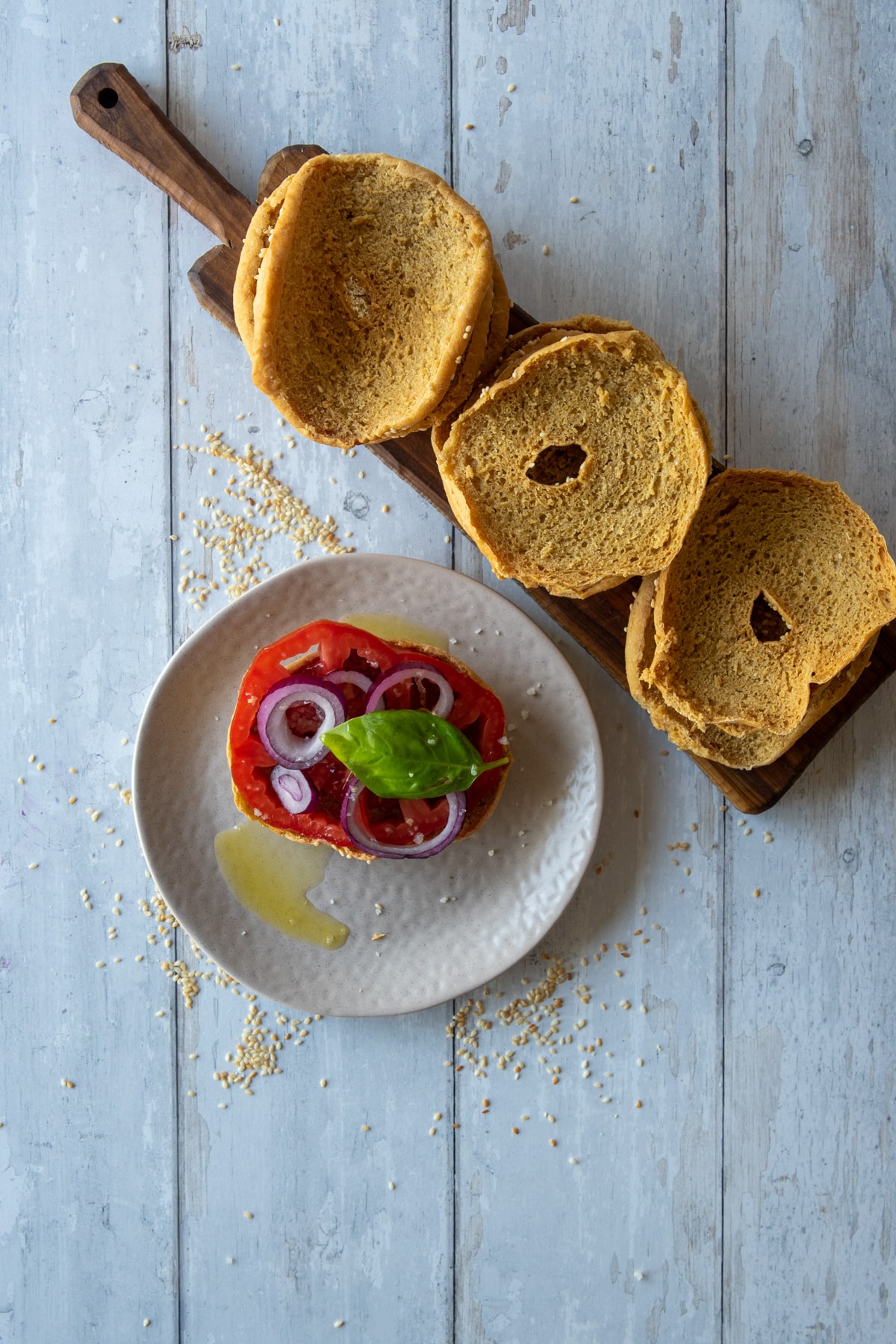
Storage and Shelf Life
Friselle is known for its long shelf life.
Due to their crispness and durability, you can easily store them in your pantry for extended periods without worrying about spoilage.
Store them in a cool, dry place away from direct sunlight to keep them fresh and crisp.
It's ideal to use airtight containers or sealable bags that prevent exposure to air, as this helps maintain their quality and texture.
They are an economical, simple, and practical solution for having ready-to-use bread whenever you need it.
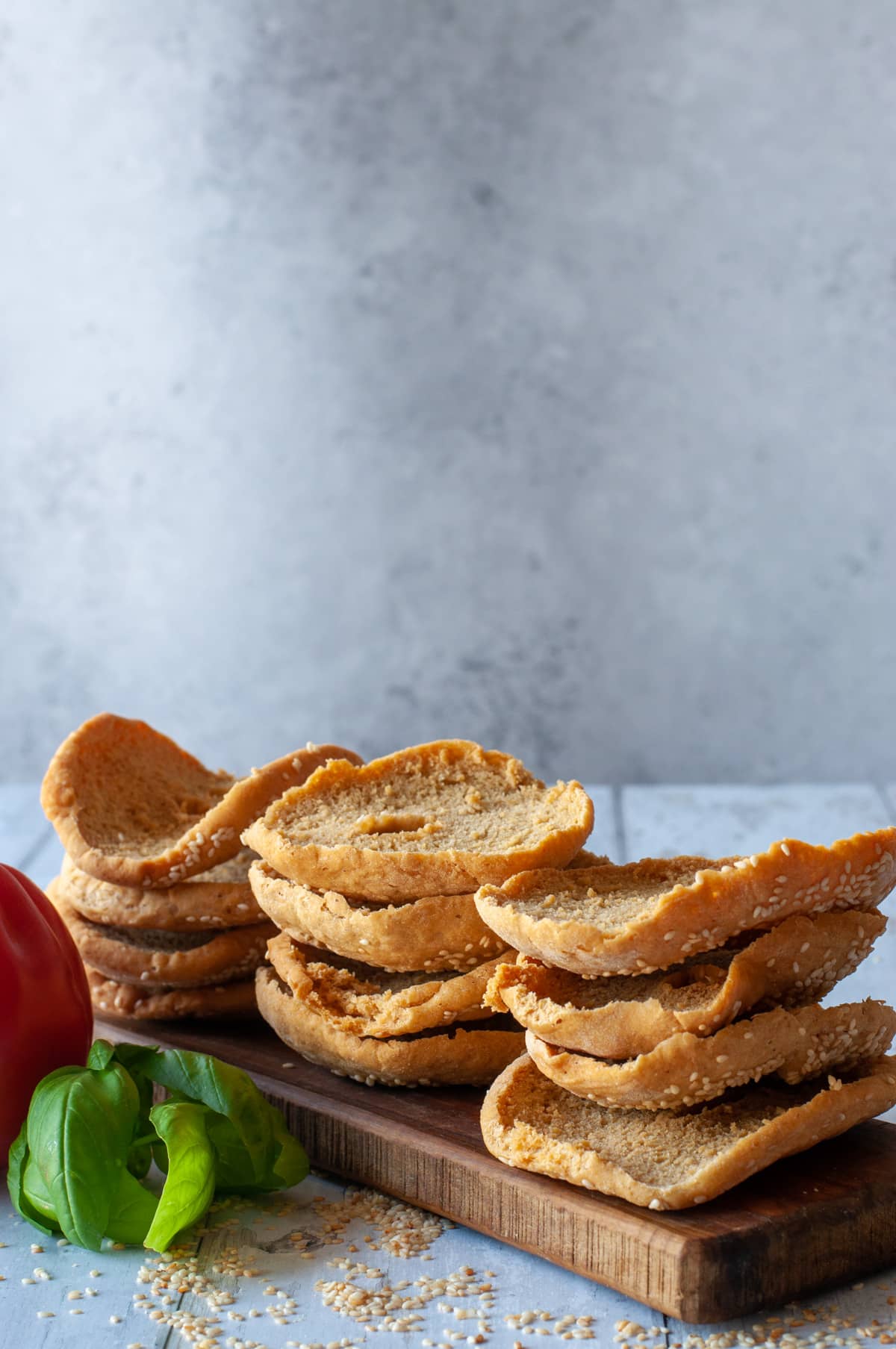
Friselle in history
The origins of this recipe can be traced back to around the 10th century BC, during the Phoenician civilization.
During their voyages, merchants would consume dark wheat donuts that were softened with sea water and flavored with olive oil.
In Puglia, Friselle is also known as "crusader bread," as it was commonly consumed by Christian troops during their long journeys.
The bread's extended shelf life and resistance to spoilage made it an ideal food for travelers in the Mediterranean.
The origins of Friselle date back to around the 10th century, when merchants embarked on lengthy sea voyages to reach prosperous markets.
The bread's durability and easy storage made it an ideal food for those long journeys.
Over time, Friselle has become a beloved symbol of Puglia's culinary heritage while representing the region's trade and maritime connections history.
The traditional recipe for Friselle showcases Mediterranean cuisine's simple yet flavorful foundation.
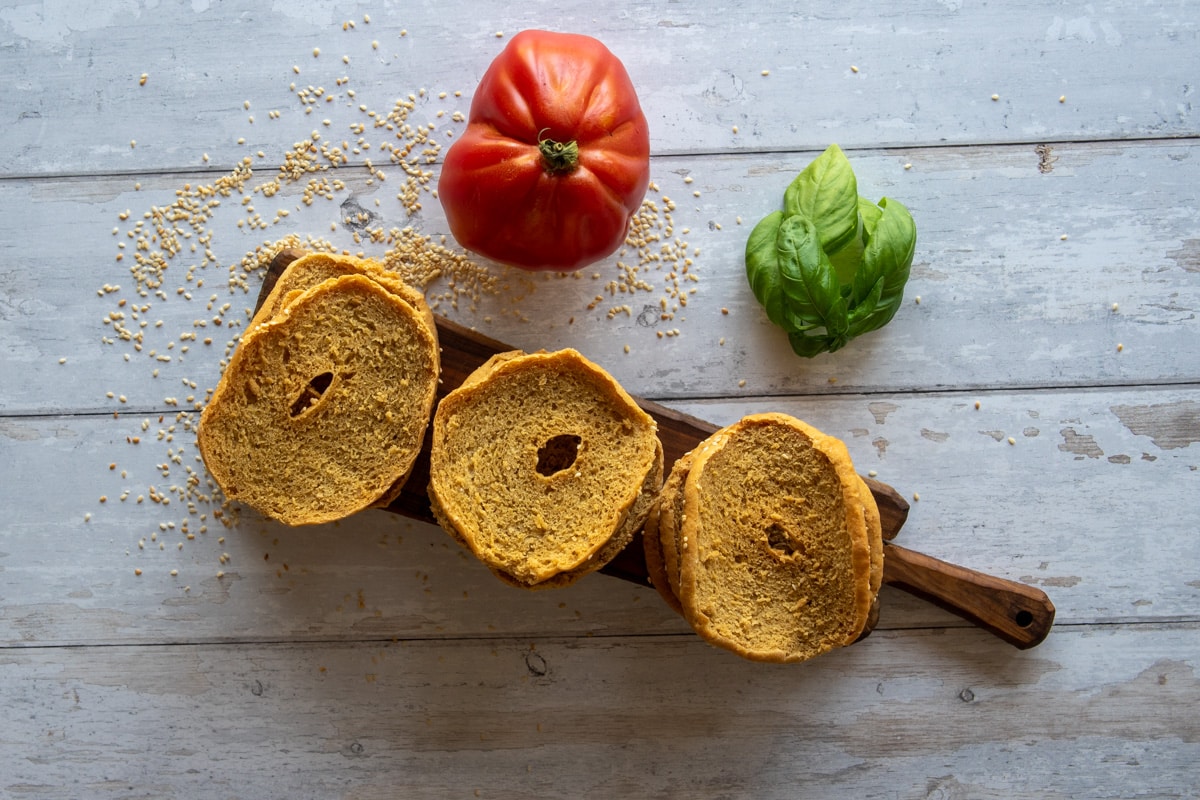
FAQ
Friselle stand out from other Italian breads due to their double-baking process, giving them a long shelf life and a distinctive crunch. Often shaped like donuts or elongated loaves, they tend to be drier and harder compared to other breads, such as focaccia or ciabatta. This unique texture allows Friselle to maintain their crunchiness, even when topped or soaked in liquid.
Friselle originated in Southern Italy, specifically in regions such as Puglia, Calabria, and Campania. This bread dates back centuries and was created to provide a long-lasting food source for sailors, fishermen, and farmers who needed nourishment during their long journeys or workdays. The double-baking process, combined with the hard texture, allowed Friselle to stay fresh and edible for extended periods of time, proving to be an excellent staple for those on the go.
While the basic ingredients of Friselle remain consistent, regional variations may influence their size, shape, and flavor. For instance, some regions may use more durum wheat flour, which results in a denser and crunchier bread, while others may use more all-purpose flour, giving the Friselle a lighter texture. Furthermore, their shape may differ depending on the region, ranging from a classic donut-like form to a more elongated loaf. Keep in mind that regardless of the regional variation, all Friselle types share the same fundamental characteristics: a double-baked, long-lasting, and crunchy bread perfect for various toppings.
More Italian bread recipes
If you are making any of these Friselle, leave your comment below I would like to hear from you. You can find more delicious ideas if you FOLLOW ME on Facebook, YouTube, or sign up to my newsletter.
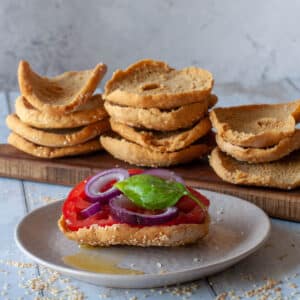
📋Homemade Friselle Pugliesi Recipe
Ingredients
- 4 cup Durum Whole Wheat Semolina or half Durum Whole Wheat Semolina and half flour 0
- 1 ½ cup water
- 2 tablespoon yeast
- 1 teaspoon salt
- sesame seeds for decoration optional
Equipment
- KitchenAid Mixer stand mixer with dough hook
Instructions
Making the dough
- Mix half of the flour with the water in a stand mixer with a dough hook and let it rest for 15 minutes (autolysis)4 cup Durum Whole Wheat Semolina, 1 ½ cup water
- Mix the yeast with the remaining flour and add to the dough2 tablespoon yeast
- Proceed to knead the dough until it's well combined and elastic
- Once the dough is smooth, add the salt and finish kneading1 teaspoon salt
- Cover the bowl and let the dough rise for 2 hours
Shaping the Friselle
- Cut the dough into 6 equal parts
- Elongate the dough and shape it into rings
- Place them on a baking sheet lined with parchment paper and let them rise for another hoursesame seeds for decoration
First bake
- Preheat the oven to 390 F - 200 C and bake the Friselle for only 15 minutes
- Once the Friselle become stable and well-risen, remove them from the oven and cut them in half crosswise while they are still warm.
Second bake
- Lower the temperature of your oven to 320 F - 160 C
- Place the halves Friselle on an oven rack and continue to bake until they turn golden brown and crisp.
- It will take from 30 minutes to an hour, depending on the flour you are using
Topping the friselle
- Sprinkle your Friselle with some cold water before adding the toppings.
- Season with some extra virgin olive oil
- Add a juicy topping and serve
Video
Notes
Storage and Shelf Life
Friselle is known for its long shelf life. Due to their crispness and durability, you can easily store them in your pantry for extended periods without worrying about spoilage. Store them in a cool, dry place away from direct sunlight to keep them fresh and crisp. It's ideal to use airtight containers or sealable bags that prevent exposure to air, as this helps maintain their quality and texture.Possible toppings
- Fresh tomatoes, extra virgin olive oil, fresh basil, red onion (in Italy, we use the sweet Tropea red onion)
- Fresh cheese like mozzarella, ricotta, feta or pecorino
- Seasonal vegetables like grilled eggplant, zucchini, or artichokes. Canned beans are also a popular topping when at sea
- Seafood like canned tuna fillet, anchovies, mussels, or shrimp
- Cured meat like prosciutto, speck, bresaola
- Spices and herbs to season like black pepper, oregano, or lemon juice
- For a sweet twist, you can spread some mascarpone cheese and top it with thinly sliced fresh fruits like peaches or apples
Nutrition
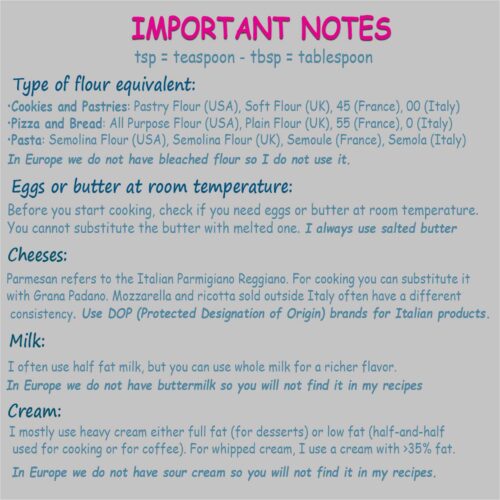




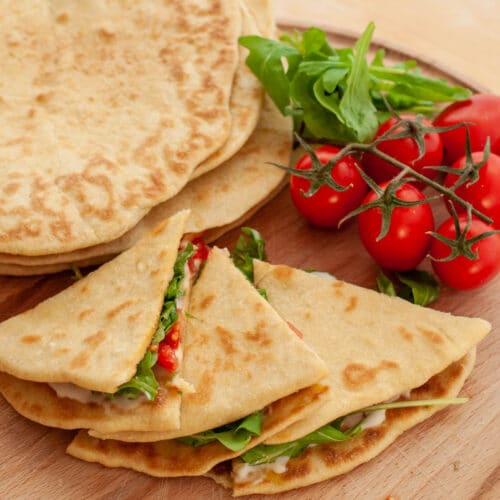
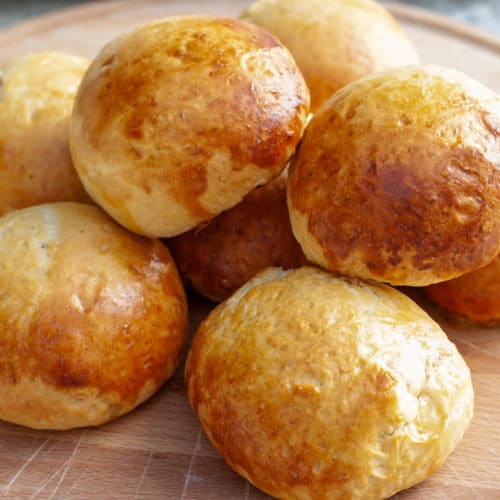
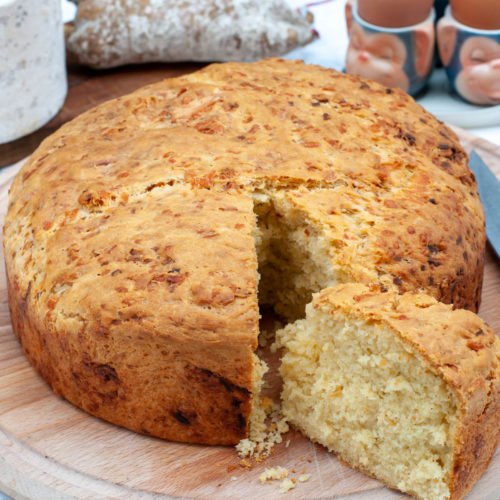




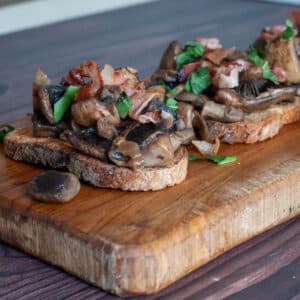
Leave a Reply